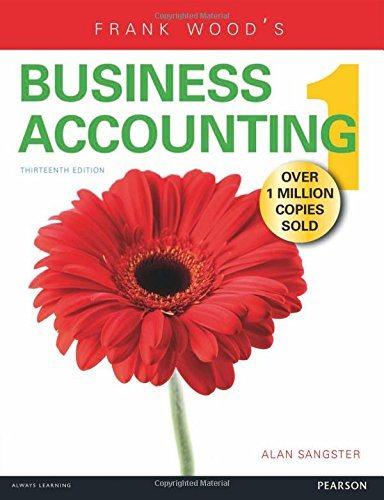








have created the following table: 8 5 12 16 8 Maintenance Administration Log Yard Milling Drying Packaging Hours worked 11,000 8,100 9,720 21,060 16,200 25,920 Number of employees 6 Department costs $ 205,600 $248,600 $369,200 $835,100 $508,700 $290,100 Your next step is to determine the proportional usage of each support department's cost driver by the other departments to which its costs are to be allocated. Complete the following tables. Maintenance Hours Worked Usage Percent Department Administration 8,100 10 % Log Yard 9,720 12 illing 21,060 26 Drying 16,200 20 Packaging 25,920 32 Totals 81,000 100 % Administration Department # of Employees Usage Percent Maintenance 8 15 % TU S2 Packaging 8 16 Totals 50 100 % Using the cells below, create the formulas that will simultaneously allocate support department costs among the departments. "M" represents Maintenance and "A" represents Administration. M = S 205,600 + % A ) A = S 248,600 + % M ) Solve the equations, If required round any decimal to three places in your computations. For example, .0183 would be rounded to .018. Round your final answer to the nearest dollar. M = S 242,890 A = $ 273,272 Use the following table to allocate the support cost departments. Round allocated amounts to the nearest whole dollar. If an amount is zero, enter "0". Support Departments Production Departments Milling Drying Maintenance Administration Log Yard Previous Next > is zero, enter "O". Support Departments Production Departments Maintenance Administration Log Yard Milling Drying Hours worked 11,000 8,100 9,720 21,060 1 Number of employees 8 5 6 12 Department cost $ 205,600 $ 248,600 369,200 835,100 50 Maintenance 0 0 Administration Final department costs $ 0 0 $ Using the rounded amounts from the support cost allocation table (previous task), complete the following table to allocate the production department costs to each product line. Round allocated amounts to the nearest whole dollar. Thousand Weight Weighted Weighted % of Final De Board Feet Factor Thous. Bd. Ft. Board Feet Log Yard: CC Hardwood 300 1 300 25 % X ", Softwood 900 1 900 75 X Production Departments Support Departments intenance Administration 11,000 8,100 Log Yard Drying Packaging Milling 21,060 9,720 16,200 25,920 8 5 6 12 16 8 205,600 $ 248,600 369,200 835,100 508,700 S 290,100 0 0 0 0 he support cost allocation table (previous task), complete the following table to allocate the h product line. Round allocated amounts to the nearest whole dollar. cand Feet Weight Factor Weighted Thous. Bd. Ft. Weighted % of Board Feet Final Department Costs Cost Allocation to Product Line 300 300 25 % 900 1 900 75 X Administration 0 0 Final department costs 0 0 Using the rounded amounts from the support cost allocation table (previous task), complete the following table to allocate the production department costs to each product line. Round allocated amounts to the nearest whole dollar. Thousand Weight Weighted Weighted % of Final De Board Feet Factor Thous. Bd. Ft. Board Feet Cc Log Yard: Hardwood 300 1 300 25 % Softwood 900 1 900 75 Total Log Yard 1,200 2 1,200 100 % Milling: Hardwood 300 2 600 40 % $ Softwood 900 1 900 60 Total Milling 1,200 3 1,500 100 % Drying: 0 0 he support cost allocation table (previous task), complete the following table to allocate the ch product line. Round allocated amounts to the nearest whole dollar. sand Feet Weight Factor Weighted Thous. Bd. Ft. Weighted % of Board Feet Final Department Costs Cost Allocation to Product Line 300 1 300 25 % X 900 1 900 75 X III 1,200 2 1,200 100 % 300 2 600 40 % X $ 900 1 900 60 X 1,200 3 1,500 100 % Accounting numeric field Total Log Yard 1,200 2 1,200 100 % Milling: Hardwood 300 2 600 40 % X Softwood 900 1 900 60 Total Milling 1,200 3 1,500 100 % Drying: Hardwood 300 1 300 25 % X Softwood 1 900 75 900 Accounting numeric field 1,200 2 1,200 100 % Total Drying Packaging: Hardwood Softwood 300 1 300 25 % X 900 1 900 75 Total Packaging 1,200 2 1,200 100 % Forest Land earns revenue of $100,000 from selling its by-products, wood shavings and saw dust. Allocate the revenue to each product line in the following table and determine the final cost per product line. he support cost allocation table (previous task), complete the following table to allocate the ch product line. Round allocated amounts to the nearest whole dollar. sand Feet Weight Factor Weighted Thous. Bd. Ft. Weighted % of Board Feet Final Department Costs Cost Allocation to Product Line 300 1 300 25 % 900 1 900 75 X 1,200 2 1,200 100 % $ 300 2 600 40 % 900 1 900 60 TII III III 1,200 3 1,500 100 % $ 300 1 300 25 % X , 900 1 900 75 1,200 2 1,200 100 % Previous Next product line in the following table and determine the final cost per product line. Thousand Board Feet Percentage of Board Feet By-product Revenue Portion of By- product Revenue Hardwood 300 25 % $100,000 S 25,000 Softwood 900 75 100,000 75,000 100,000 Total 1,200 100 % Cost per Product Line Hardwood Softwood Log Yard Milling Drying Packaging Subtotal 1 Portion of By-product revenue 25,000 75,000 Total cost per product line $















